What is Going on in Sri Lanka?
Sri Lanka is currently experiencing its worst economic crisis since its independence in 1948, as shortages of food and fuel are causing unrest among the citizens. Economic reforms, which included significant tax cuts and debt repayments, depleted the nation's foreign exchange reserves and this has made the situation even worse. In light of these circumstances, there were widespread demonstrations across the island nation, which prompted the Prime Minister, Mahinda Rajapaksa, to resign and the President, Gotabaya Rajapaksa, to step down. Thereafter, the lawmakers chose Ranil Wickremesinghe, a six-time Prime Minister, as the new President of Sri Lanka and a state of emergency has been declared in the country. A sizable portion of the 22 million citizens of the nation are in need of food-aid due to rising inflation. During a meeting of G20 Finance Ministers and Central Bank Governors in Indonesia, Kristalina Georgieva, the International Monetary Fund’s (IMF’s) Managing Director stated that "Countries with high debt levels and limited policy space will face additional strains. Look no further than Sri Lanka as a warning sign"[1].
The foremost question which arises is that what are the reasons behind the fall of this island nation and is it true that the situation of Sri Lanka is because of China’s debt trap diplomacy?
What Led to this Situation?
The crisis is not a surprise to everyone as multiple external shocks and Rajapaksa's prior resistance to seek assistance from the International Monetary Fund (IMF) has exacerbated years of mismanagement. The long civil war between the Liberation Tigers of Tamil Eelam (LTTE) and the government came to an end in 2009, after which the then-president Mahinda Rajapaksa took out significant foreign loans to cover the war costs. Additionally, he started new infrastructure projects to draw tourists and reward its allies. Due to the lack of foreign reserves, the government was forced to rely on foreign lenders, including the Chinese, to help cover the debt. Sri Lanka's main source of foreign income, tourism, was severely damaged by the 2019 Easter bombings and the COVID-19 pandemic. Additionally, to make farming in Sri Lanka 100% organic, Gotabaya vowed to outlaw artificial fertilizers in 2021, a decision which decimated Sri Lanka's tea sector, the country's primary export crop. The country's food insecurity has increased as a result of the fertilizer restriction (which was eventually lifted) and worldwide grain shortages brought on by the conflict in Ukraine. The Rajapaksa economic strategy failed miserably, devastating both the country and its economy[2].
Moreover, Sri Lanka's debt is largely held by China, which has frequently been cited as an example of "debt trap diplomacy." R. Ramakumar, a professor of economics at the Tata Institute of Social Sciences, wrote in Channel News Asia (CNA) that China's "debt-trap" policy is solely to blame for Sri Lanka's catastrophic economic predicament[3].
What is Meant by China’s Debt Trap Diplomacy?
This strategy of diplomacy comprises extending loans or projects with terms that are too hard for states to repay, ultimately pressuring them to make political or economic concessions. In other simpler terms it means a situation where someone is compelled to make unwise loan purchases in order to pay off their previous debts. In international relations this term is used to represent a nation or an organisation which provides loans to developing nations in order to expand their own political leverages.[4]
The word dept trap diplomacy was created by Indian intellectual Brahma Chellaney, which was further popularised by two Harvard University graduate students by writing a paper and dubbed it as Chinese "debt book diplomacy."[5]
China has expanded its trade and investment footprints globally through a variety of economic diplomacy strategies and geostrategic positions. However, policymakers, researchers, and particularly strategists are worried about China's growing engagement with south Asian nations and its implications of becoming a global power. Beijing launched the Belt and Road Initiative (BRI), a new and far larger global infrastructure building project, in 2013. The BRI is thrilling to many individuals but is also worrying to others.
China is funding infrastructure projects in strategically positioned developing nations through its $1 trillion "one belt, one road" initiative, frequently by providing those countries' governments with sizable loans. As a result, nations are falling into a debt trap that makes them susceptible to China's sway.
The initiatives that China funds frequently have little to do with boosting the local economy and more to do with giving Beijing easier access to natural resources or creating a market for cheap Chinese goods. China frequently deploys its own construction workers, reducing the number of jobs that are produced locally[6]. This often results in conflicts between Chinese workers and local population adding to the anti-Chinese sentiments.
China, Sri Lanka and the Trap
As part of its Belt and Road Initiative, China has made enormous investments in Sri Lanka for the extensive infrastructure programme which intended to construct ports, roads, railroads, and pipelines throughout Asia, Europe, and Africa. Sri Lanka’s Hambantota port is a perfect example to show how the dept trap diplomacy of China played out.
The Sri Lankan government planned the billion-dollar Hambantota port project with the expectation that it would, among other things, provide logistical and commercial benefits. The main goal of this project was to increase ship traffic along the east-west shipping route, which is barely ten nautical miles south of Hambantota and would ease pressure on the Colombo port. Under President Mahinda Rajapaksa's administration, the project got underway in 2008. The first phase's construction cost USD 361 million, of which 85% was funded by a loan from the EXIM Bank of China at an interest rate of 6.3 percent.
Due to political unrest, the construction got halted in 2010 and Sri Lanka was struggling to pay the debt. As per mainstream media reporting, Sri Lanka negotiated a “debt-to-equity swap agreement” with China Merchant Port Holdings Limited (CM Port) and leased them the Hambantota port for 99 years.[7]
As per the estimates, out of the total outstanding foreign currency debts of USD 26.4 billion, about USD 7.1 billion was debt from China only. This was the outstanding external foreign currency debt of the public sector by the end of 2021, for which repayments were suspended on 12 April 2022. Hence it was seen that about 26% of the foreign debt was owed to Chinese creditors itself. About $4.3 billion of the outstanding payments were owed to the EXIM Bank of China and $2.8 billion to the China Development Bank (CDB).
Some sources, however, suggest that China’s contribution to Sri Lanka’s debt build-up is overestimated because of the “Chinese debt trap” wherein Sri Lanka is cited as the victim. The largest foreign lending source during the past decade was the International Sovereign Bonds (ISBs), also referred to as the Eurobonds. By the end of 2021, ISBs accounted for 36.5% of the total foreign debt in Sri Lanka and its repayments accounted for 47% of total foreign debt repayments in the same year. This may show that China’s lending is much smaller as some headline numbers say that only 10% of Sri Lankan government debt is from China. In reality however, when a wider definition called Public and Publicly Guaranteed (PPG) debt is considered, China’s commercial lending to the government and the State-owned Enterprises (SOEs) shows that the debt share had risen to 19.9% at the end of 2021 and debt service on that debt stock was 20% of total PPG debt service.[8]
India’s Concern
There has been extensive intellectual, cultural, religious, and linguistic exchange between India and Sri Lanka during the course of their more than 2500-year relationship. Cooperation has increased in the areas of development, education, culture, and defence, as well as trade and investment. At the same time China's hegemonic position in Sri Lanka creates a number of issues for India. Over 30% of India's container cargo passes via Colombo Port, thus an interruption there could hurt India's international trade. A firm owned by the Chinese government, China Merchant Port Holdings, owns 85% of the Colombo extension. India's position as Sri Lanka's top importer has been replaced by China. Chinese investments in Sri Lankan infrastructure, such as ports and roads, allow Chinese businesses to sell trucks, steel, and construction equipment there, reducing India's economic space. Facilities like the Hambantota Port could also be used militarily. Even though the current Sri Lankan government has prohibited military use of the port, this eventuality could arise if a more China friendly government takes over power in the future.[9]
Amidst all this, India has handed Sri Lanka around $3.8 billion this year in the form of loans, currency swaps, food and fuel help. India had already committed to a comprehensive strategy to strengthen commercial and infrastructure connections between the two countries before the acute political chaos, which was regarded as a reassertion of its historical relationship with Sri Lanka and a response to rising Chinese influence. The economies of the United States, Australia, and Japan—the other QUAD alliance members—have also provided varying degrees of help.
Conclusion
Due to the strategic position of Sri Lanka in the Indian Ocean, it has its own geopolitical significance. However, owing to the political mismanagement and economic crisis, the country is going through a period of strong economic instability. Its close ties with China are also one of the reasons for the country's current dire situation. As mentioned by several analysts, China uses the debt trap policy against the developing nations to establish its economic and political power over them. This theory can be proved right with the live example of Sri Lanka, where the nation had signed away its most strategically positioned port in the Indian Ocean to China as part of a 99-year lease. According to some reports, the "Chinese debt trap" has led to an overestimation of China's role in Sri Lanka's debt accumulation. In reality however, when a wider definition called Public and Publicly Guaranteed (PPG) debt is considered, China’s commercial lending to the government and the State-owned Enterprises (SOEs) showed that the debt share stood at much higher numbers than mentioned in those sources. Such problems are a cause of concern for any country themselves, but it is to be noted that the neighbouring countries are also affected because of these problems. In the case of Sri Lanka, it can be seen that India is also getting affected by the debt trap policy. India and Sri Lanka have close ties with each other but these ties are weakening due to the growing relations between China and Sri Lanka. One of the concerns is that if there is a disruption at Colombo Port, it might harm India's overseas trade as more than 30% of the country's container freight goes through the port. Hence, since the crisis in Sri Lanka began, India has been playing the role of a worried neighbour and remains concerned with developing situation in Sri Lanka.
Endnotes :
[1]Herald, Deccan. 2022. Crisis in Sri Lanka a warning to other countries with high debt levels and limited policy space: IMF chief. 18 July. Accessed July 18, 2022. https://www.deccanherald.com/international/world-news-politics/crisis-in-sri-lanka-a-warning-to-other-countries-with-high-debt-levels-and-limited-policy-space-imf-chief-1127850.html.
[2]Salikuddin, Tamanna. 2022. Five Things to Know about Sri Lanka’s Crisis. 15 July. Accessed July 15, 2022. https://www.usip.org/publications/2022/07/five-things-know-about-sri-lankas-crisis.
[3]India, The Times of. 2022. China's 'debt-trap diplomacy' behind Sri Lanka crisis: Report. 17 April. Accessed April 17, 2022. https://timesofindia.indiatimes.com/world/south-asia/chinas-debt-trap-diplomacy-behind-sri-lanka-crisis-report/articleshow/90891894.cms.
[4]Hussain, Zoya. 2022. Explained: How Is China Extending Its Global Influence Through Debt Trap Diplomacy. 8 May. Accessed May 8, 2022. https://www.indiatimes.com/explainers/news/chinas-debt-trap-diplomacy-568937.html.
[5]Brautigam, Deborah. 2019. “A critical look at Chinese ‘debt-trap diplomacy’: the rise of a meme.” Area Development and Policy 14.
[6]Chellaney, Brahma. 2017. China’s debt-trap diplomacy. 24 January. Accessed January 24, 2017. https://www.aspistrategist.org.au/chinas-debt-trap-diplomacy/.
[7]LammuansiamGangte*. 2020. “The Debt-Trap Diplomacy Revisited: A Case Study on SriLanka’s Hambantota Port.” Artha-Journal of Social Sciences 53-66.
[8]Umesh Moramudali, Thilina Panduwawala. 2022. “From project financing to debt restructuring: China’s role in Sri Lanka’s debt situation.” Panda Paw Dragon Claw.
[9]House, Gateway. 2018. Sri Lanka: Debt-trapped. 31 January. Accessed Jaunuary 31, 2018. https://www.gatewayhouse.in/chinese-investments-in-sri-lanka/.
(The paper is the author’s individual scholastic articulation. The author certifies that the article/paper is original in content, unpublished and it has not been submitted for publication/web upload elsewhere, and that the facts and figures quoted are duly referenced, as needed, and are believed to be correct). (The paper does not necessarily represent the organisational stance... More >>
Image Source: https://icsin.org/blogs/wp-content/uploads/2022/05/Header-Photo-Colombo-port-city.jpg

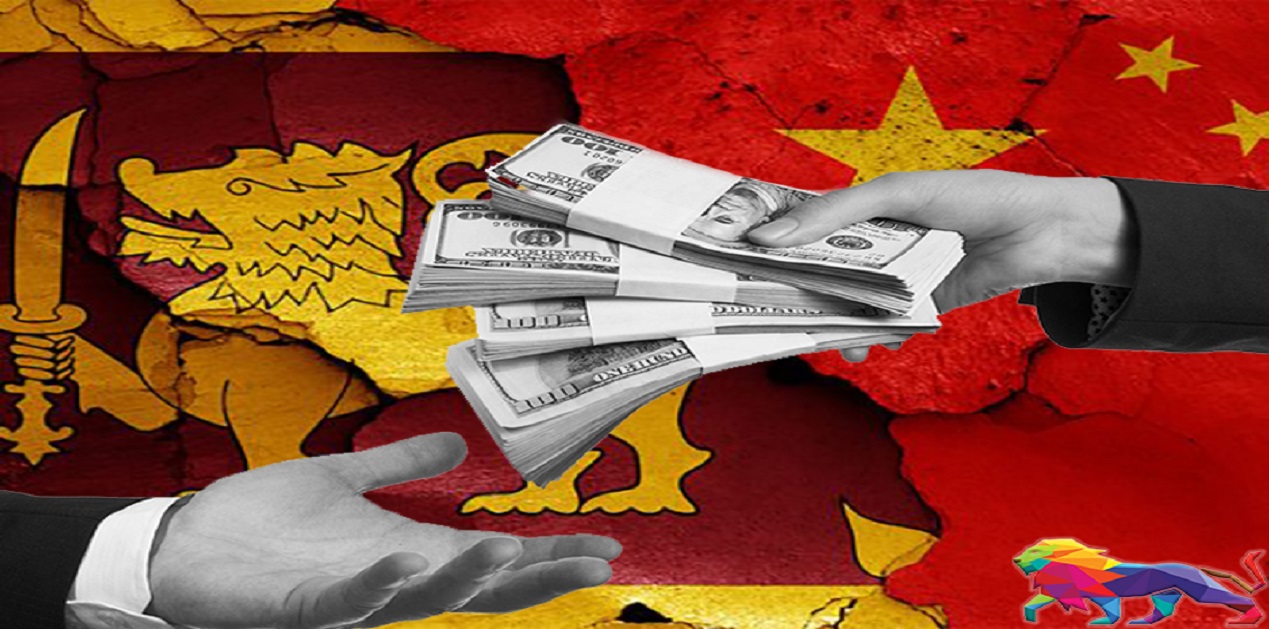


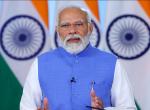
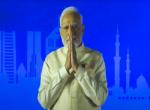

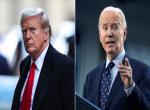
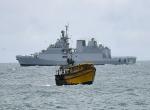
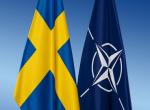
Post new comment